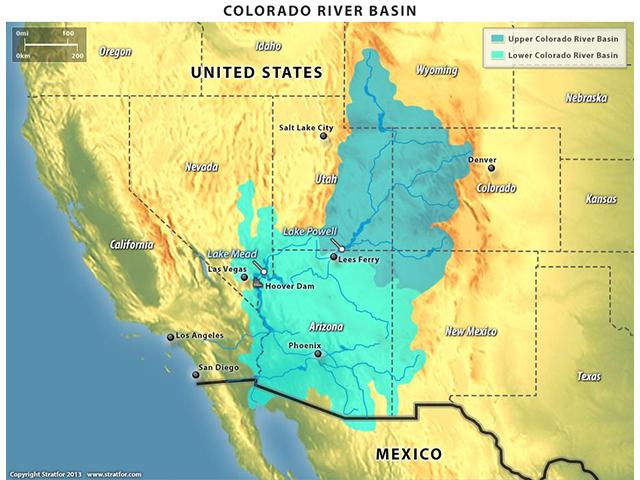Porter said farms have fewer tools to manage water use than urban areas, so urban areas have found creative ways to maximize their water supply.
A recent survey of the basin showed interesting changes over the last four years as water levels continued to decline. Porter said water demand in the basin fell by about 18%, but population he said increased by 24%.
“So for many reasons, urban growth and water demand are decoupled, and cities are better and better at growing with limited water supplies,” she said.
“One of the biggest tools that cities don’t have available for agriculture is the ability for cities to promote indoor water use and reuse all of that water.”
water recovery
The Las Vegas, Phoenix, and Tucson regions recover approximately 93% of the water that enters their wastewater systems.
“It’s not an agriculturally available solution,” Porter said.
“Now we have a big challenge. We’re seeing a decline in the flow of the Colorado River, which means we have to find a way to keep water in the system.”
Matt Moreland, owner of Moreland Farms in Braman, Oklahoma, has waged water battles with the local towns and cities in his area.
Moreland said most farms use the latest technology to control water usage, but are hesitant to drastically reduce their use.
“Our own farm was very important to us,” Moreland said at the seminar.
“Irrigation technology has also greatly improved how we can remotely control the center-pivot system. It will tell you every turn, whether there is surplus water or not, but unfortunately because of the way the water rights are set, if you don’t use the maximum amount in seven years, you’re going to lose it as a wise policy. is that if we start saving water by running it, we will be punished later for not using so much water.”
Moreland said federal multi-peril crop insurance is important for farms, but water loss isn’t the crop loss you can pay for if your farm doesn’t have water.
farm focus
Porter said that in the Colorado Basin, and especially in Arizona, all attention is focused on what farmers grow. tribes, and about 5 million acres of agricultural irrigation.
According to the 2017 Census, the total market value of Arizona crops was about $2.1 billion. Porter said the types of crops grown face increasing scrutiny.
“What you see here is more than 350,000 acres in Arizona dedicated to growing forage,” she said.
“Another nearly 200,000 acres are devoted to growing cotton. These are very high-water crops with fairly low margins in terms of cash value. A much smaller area is devoted to growing vegetables. However, vegetables are being compared to fodder, and I think that voice will be a factor to think about what is the effective use of water required for agriculture.”
Two years ago, the Colorado River Basin had average snowfall, but a year later the flow was only 35% of the average, Porter said.
The average snowfall this year is between 65% and 85% of the average, with good recent snow cover.
“So we’re hoping for some easing in terms of storage, but not enough snow to solve all the problems we’re seeing,” Porter said.
Additionally, she said the estimates of the amount of water produced in the river were initially wrong.
“But it didn’t feel like an over-allocation because the various parties that have or will have water rights in the future hadn’t yet developed their rights,” Porter said. I got
“They were out of the water, so in many ways we didn’t see the effects of the rotation until fairly recent history. Urban growth shouldn’t be seen as a driver of water scarcity on the Colorado River.”
find a solution
The watershed issue is far from resolved, but Porter said water shortages are forcing all parties to negotiate.
“Believe it or not, I am optimistic that there is a solution,” she said.
“And one of the reasons I’m optimistic is because I’ve faced things getting really bad and how bad it is. because
“When you look at the big picture with respect to interstate conflicts, there is so much funding available, people are voluntarily keeping water out of the system, and money is a key factor in creating innovative programs. I think we are in an extraordinary period of time when the
Read more about DTN: “Arizona Bears Federal Cut Blunts in the Colorado River Stream” https://www.dtnpf.com/…
Todd Neeley can be reached at todd.neeley@dtn.com.
Follow him on Twitter @DTNeeley
(c) Copyright 2023 DTN, LLC. All rights reserved.
















